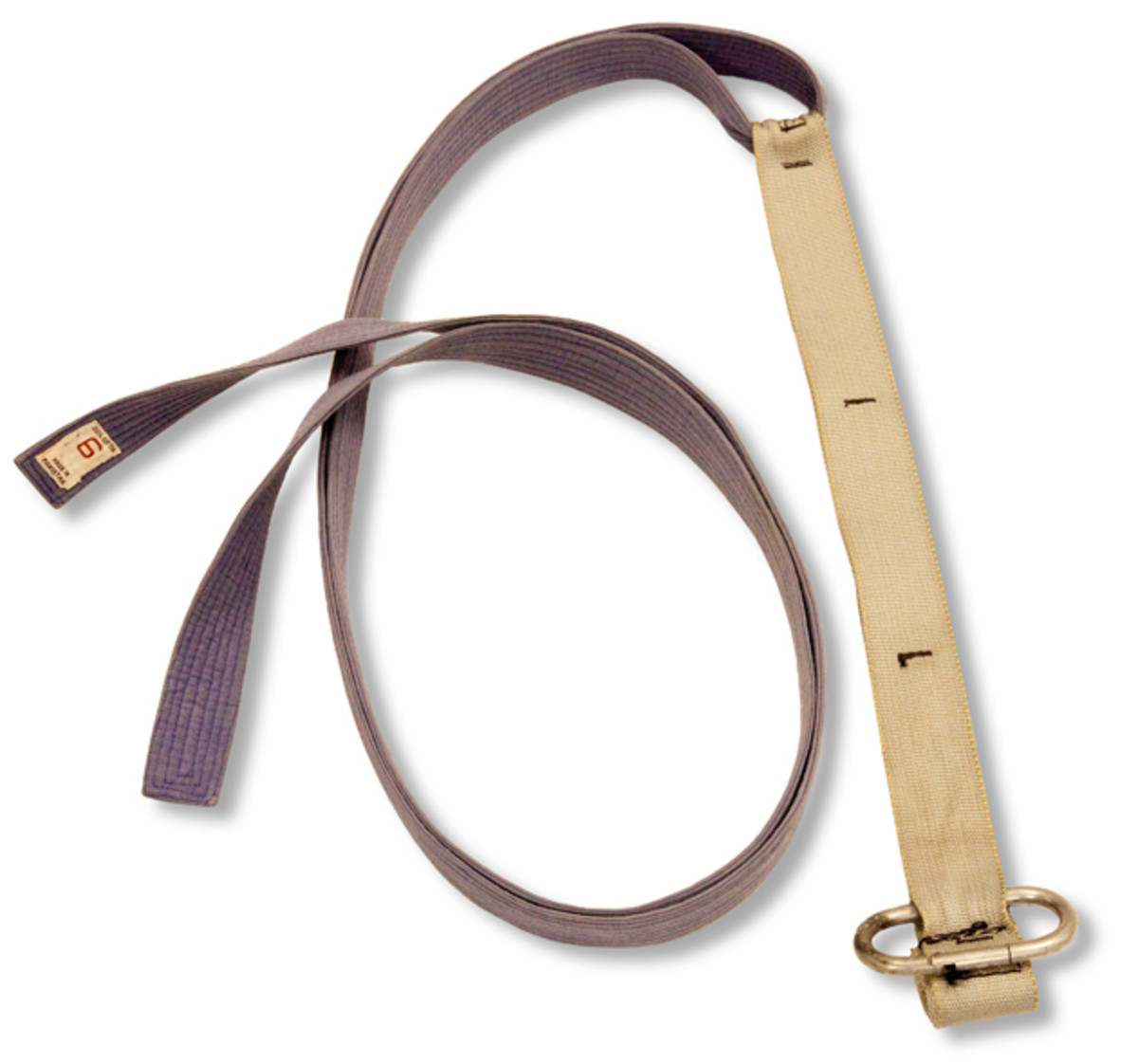TRX Inventor Randy Hetrick: From Navy SEAL to Fitness Visionary

All you have to do is listen to the way Randy Hetrick speaks—his cadence—to understand what it must have been like for him to be on a Navy SEAL operation, confined to a small area on a ship and unable to maintain the daily regimen that kept him at peak fitness.
Hetrick talks fast. He moves from one topic to another without taking a breath. He can transition from a story to the next without missing a beat. And so he explains how he came up with the fitness apparatus known as TRX, which stands for Total Resistance Exercise.
“I deployed on an operation in Southeast Asia in the mid ’90s,” he says. “We were deploying a lot. SEALs and special ops guys are like pro athletes in uniform. You have to train constantly, which is easier to do when you’re at the command post, where we had a world class gym. But once you’re deployed, all that goes away and it’s like the Roman days. You’re doing the same body weight exercises the Spartans were knocking out in preparation for battle.”
As days were passing and the operation continued to be put on hold, push-ups and sit-ups were no longer satisfying the SEALs and Hetrick’s frustration was growing.
"Guys were pissing and moaning about not being able to train,” Hetrick recalls.

Little did he know that packed deep inside his duffel bag was the answer.
“I had accidentally stuffed this blue ju-jitsu belt in the bag and was like, What the hell?” says Hetrick. “I tied a knot in it, threw it over a door and closed the door. Then, I leaned back and started lifting my body against it. After I did some reps. I started to play with it.”
Hetrick started to invent exercises, and his mind started to race.
“If I put a knot in the middle, I can use both arms. If it were a little longer, I can do presses. I dug some nylon out of a locker and made it longer and, Boom!, I’m getting a great workout. Basically, that ju-jitsu belt was the Cro-Magnon version of what today is TRX. It was developed and perfected over time back at the command post.”
Following his SEAL days, Hetrick went to Stanford Business School, his brain fixed on the potential of what he’d started with that belt he threw over a door. The time he spent in the classroom was not as productive as the time he spent around the strength and conditioning coaches who were working with Stanford’s varsity athletes. What struck Hetrick immediately was the way the exercises he was coming up with worked for every type of athlete, from a defensive back on the football team to a woman golfer—from a 6-10 basketball player to 5-3 cross-country runner.
The 10 Key Weight Training Exercises for Major League Baseball
“That was when I decided there was a business in this,” says Hetrick, who improved the product’s aesthetics, its look and feel, while remaining true to its spartan origin. “And I figured out pretty quickly that the best consumers for us were professional personal trainers. One of the great things about personal trainers is they have an interesting mix of clients. In the same day they might be training a mom, a dad, a high school athlete, a college athlete and a pro. The trainers really got it. And it took off when they introduced it to athletes. Once the athletes got their hands on it, it was a done deal. TRX is literally a part of every sport on earth now.”
While Hetrick is quick to point out retired Mixed Martial Arts fighter Brandon Vera as his first “pro bono” ambassador, his best-known disciple used TRX to save his career.
“Yeah, the big breakout moment for us was when a trainer/friend of mine in San Diego, who was the former strength and conditioning coach for the Chargers, went out on his own and started this elite training facility in Scripps Ranch,” Hetrick says. “He had a bunch of guys on the Padres and Chargers, who were his clients in the off-season. One of them was this cat, who wasn’t very well-known outside of sports junkie circles. His name was Drew Brees. I met Drew through my buddy Todd (Durkin) after he left the Chargers and was working with Todd at FQ10 to come back from a potentially career ending shoulder injury to his throwing arm. We set him up with some straps, and that was the start of a long relationship. It grew organically. Prior to our introduction through Todd, I didn't know anything about Drew—nor he about me.”
Brees, the MVP of Super Bowl XLIV and the holder of a number of NFL passing records, learned how to use the straps, became an immediate devotee and has never looked back. He has also become a believer in Hetrick’s latest TRX invention, the Rip Trainer, which is basically a bar attached to a resistance cord.

“I initially used TRX for my physical therapy and got hooked in its effectiveness,” Brees said via email. “It became a mainstay for my performance training regimen once I had recovered. Then TRX introduced Rip Training, which I immediately adopted and began to create dynamic moves and programs specifically tailored to my job as a quarterback in the NFL. TRX is now a part of every workout I do—and my wife, Brittany, loves the TRX as well, so it is a family affair.”
With waves crashing in the background as he stood on the Florida coast on a recent surf trip, Hetrick, 48 and “monkey strong,” as he likes to say, believes his invention, which began as a belt knotted and thrown over a door, continues to evolve. He believes it has no limits.
“It always under-promises and over-delivers,” Hetrick says. “It’s just a set of straps. But it’ll move any way the body wants it to move. I’ve gotten stronger than when I was 15 years younger. You’re better able to manage your body in an unstable circumstance, which is just like sports. Think about it. I can crush the most elite MMA fighter on earth with these silly straps. And your wife likes it, too."
